Did you know BHP rallies often trigger CBA selloffs?
Commonwealth Bank (ASX: CBA) and BHP (ASX: BHP) frequently move in opposite directions, highlighting dramatic rotation dynamics between two of Australia's largest companies and their respective sectors.
On 21 February, CBA shares tumbled 2.5% as lackluster earnings from banking peers including ANZ, Westpac, and Bendigo Bank, highlighted weakening margins across the sector. That same day, BHP surged 2.7% despite no major company announcements and relatively flat iron ore prices.
The pattern repeated on 23 April, when CBA dropped 2.5% following a wild 5% rally to record highs the previous session. Once again, BHP moved in the opposite direction, climbing 3.3% without any significant news or dramatic changes in commodity prices.
So I thought I'd take a closer look at how BHP performs during days of CBA weakness.
When CBA tumbles, BHP often rallies
The below table observes CBA declines of 2% or more and how BHP performed on the same day, dating back to August 2024.
The results show a clear pattern: when CBA falls sharply, BHP often rallies 3-4%.
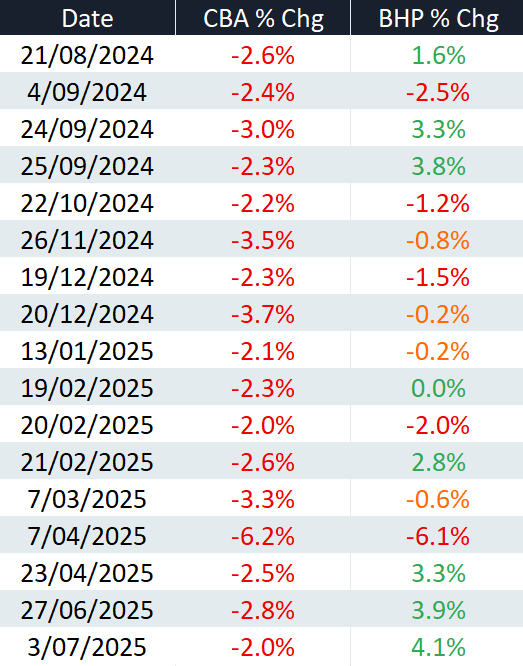
There are exceptions where both stocks fell together, but these typically coincided with broader market events:
- 4 September 2024: The ASX tumbled 1.9% as softer-than-expected US manufacturing data stoked recession fears. Nvidia shares also fell 10%, representing the largest single-day fall in the history of Wall Street.
- 19 December 2024: The ASX 200 tumbled 1.7% after Powell signalled that the pace of rate cuts would significantly slow in 2025.
- 7 April 2025: Markets experienced a sharp selloff after Trump's Liberation Day announcement.
These instances aside, BHP consistently outperforms during CBA's difficult days, suggesting active sector rotation rather than coincidence.
What's more interesting is that the rotation seems to focus largely on BHP. On Thursday (3-Jul), BHP is trading 4.5% higher, far outpacing peers Rio Tinto (+1.1%) and Fortescue (+0.9%)
Resources show signs of life
The resource sector has rallied sharply in recent weeks, with the S&P/ASX 200 Materials Index climbing around 6% since 23 June. The index sits on the verge of breaking through its key 200-day moving average, though previous breakthroughs have proven short-lived.
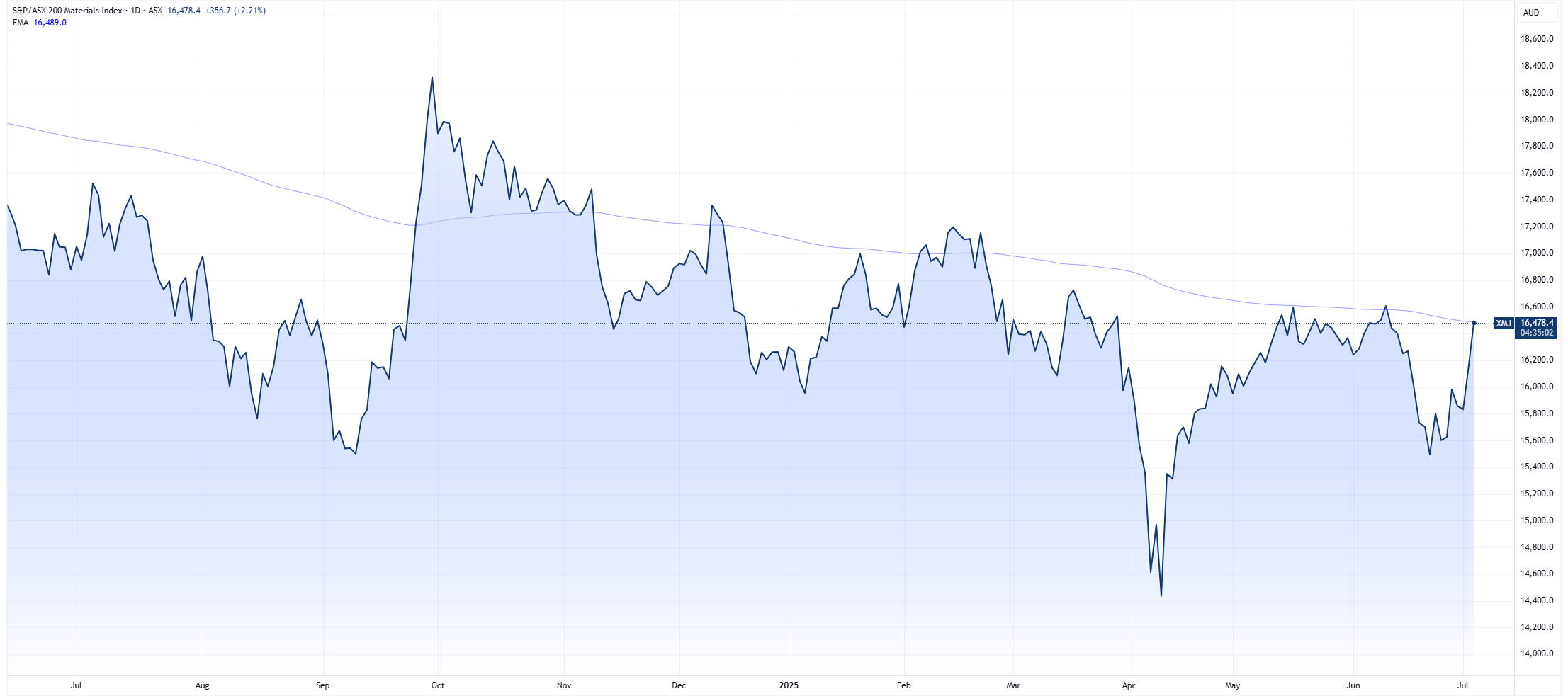
The recent move has been fuelled by a broad range of catalysts including:
China Manufacturing Data: While the official manufacturing PMI remained contractionary at 49.7, the Caixin PMI returned to expansion territory at 50.4, signaling strength in smaller, export-oriented firms.
China Stimulus Hopes: Fresh policy stimulus expectations emerged after meetings of China's Central Financial and Economic Affairs Commission.
Rate Cut Expectations: Markets now price in 65 basis points of Fed cuts through 2025, while the RBA is expected to deliver three cuts by year-end.
The rally has been remarkably broad, spanning iron ore, lithium, copper, aluminum, and coal. South32 recently hit three-month highs alongside rising aluminum prices, lithium shows signs of bottoming, and copper miners are climbing as copper crosses the critical US$5/lb threshold.
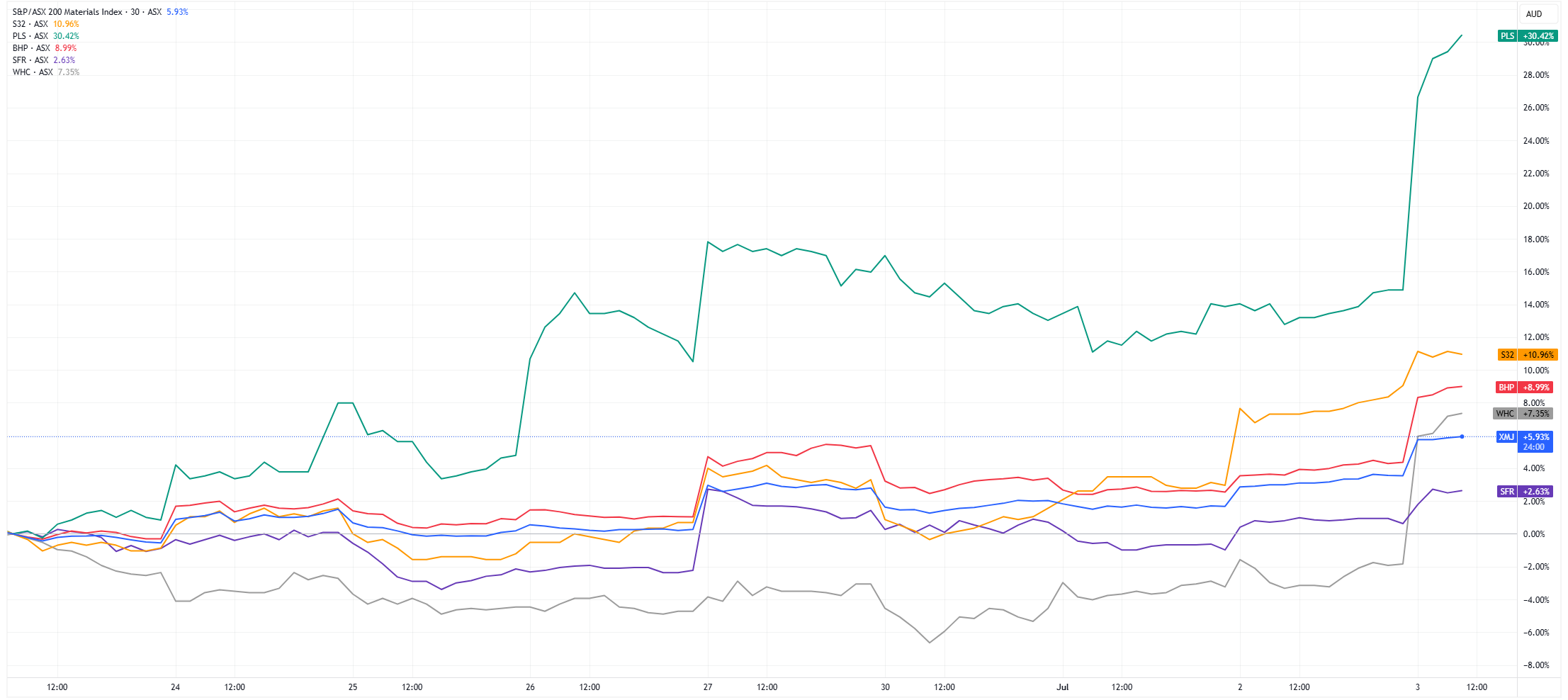
Price Divergence Reaches Extremes
BHP has trended lower since January 2023, with a handful of brief stimulus-driven bounces, while CBA has weathered market volatility better, buoyed by consistently beating earnings expectations in both its latest half-year and full-year results (and of course its safe haven status).
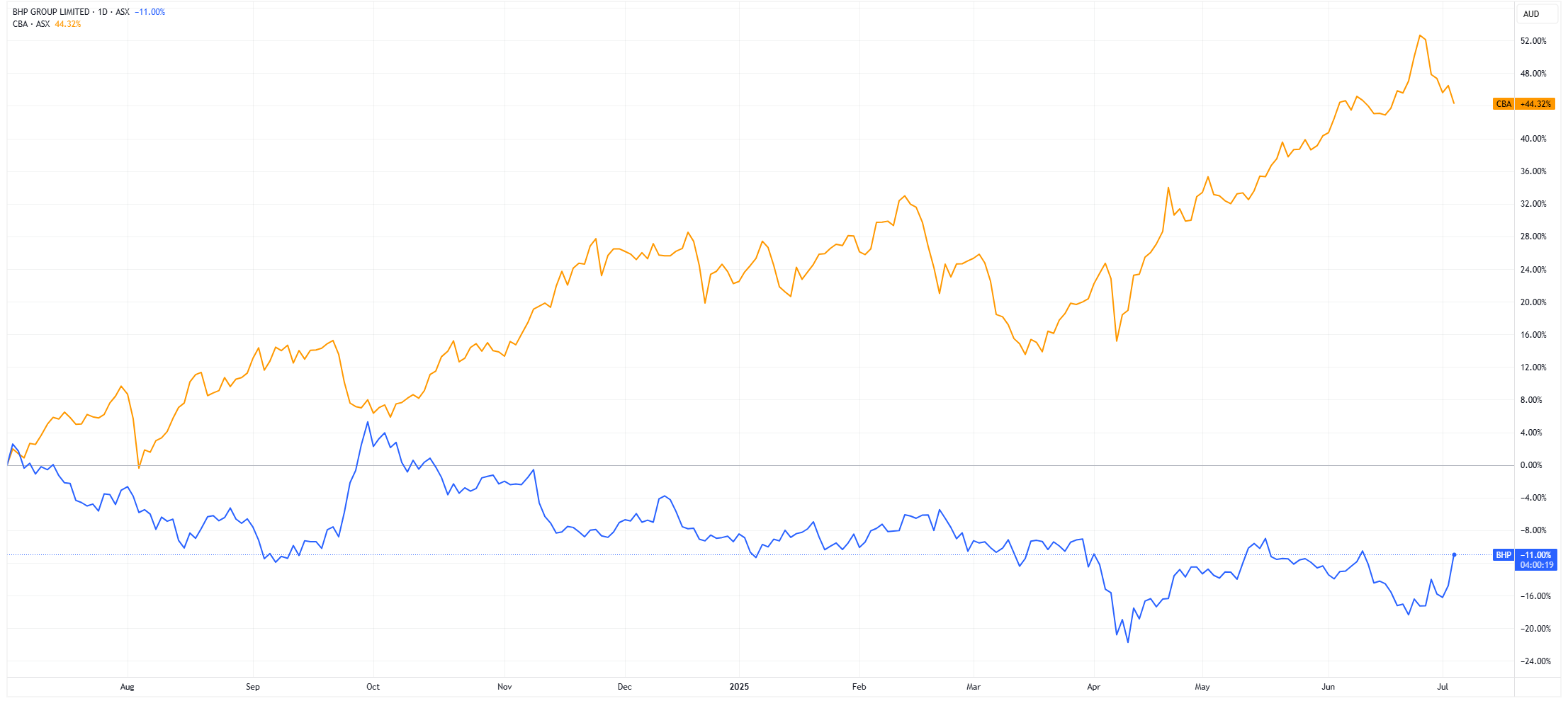
The CBA-to-BHP share price ratio now sits at levels not seen since 2016, and before that, 1999.
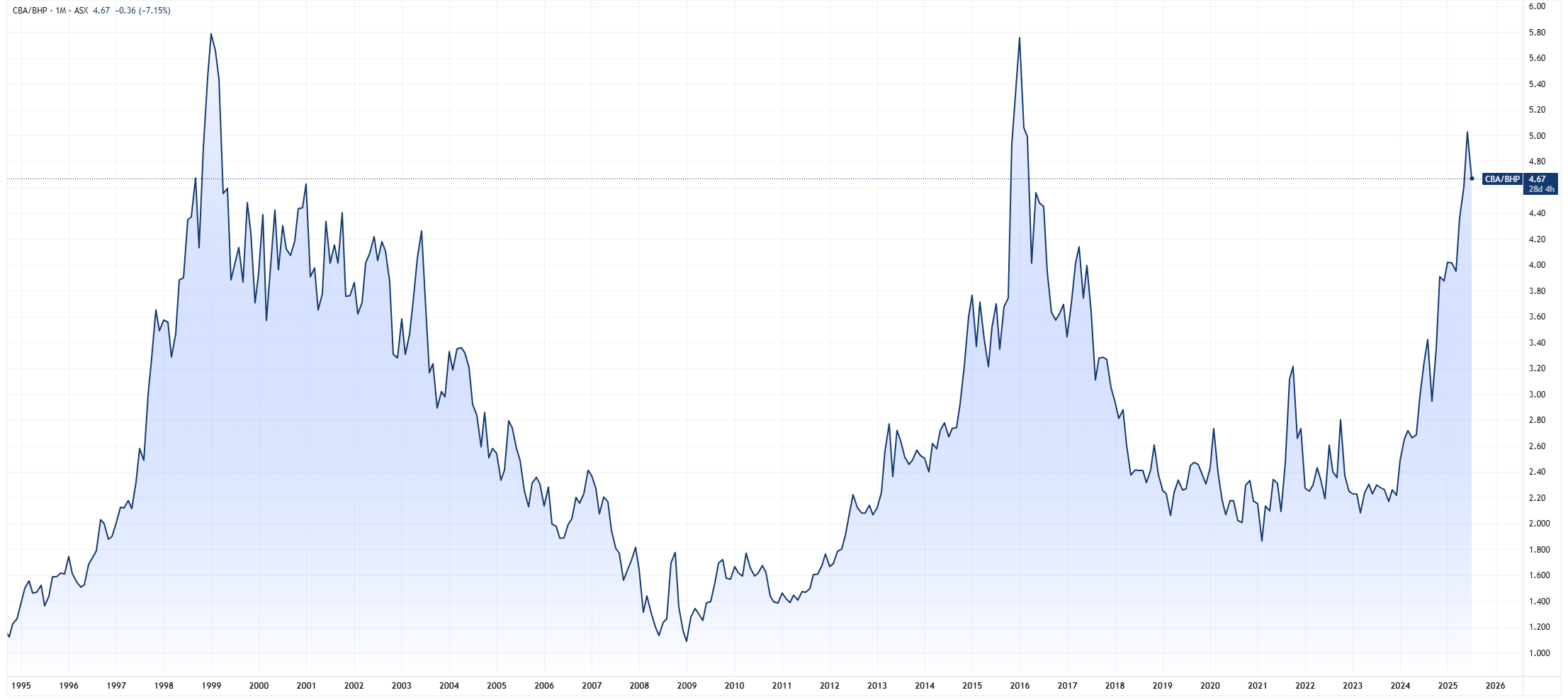
Is This The Turning Point?
Everyone loves to bash CBA – it's among the few major global banks trading above 30x earnings, with a price-to-book ratio exceeding 4x and a modest 2.6% dividend yield despite minimal growth prospects.
But here's a hot take – extreme valuations can persist far longer than logic suggests, sustained by passive fund flows and momentum. The question isn't whether CBA looks expensive (it clearly does) but rather what catalyst will finally redirect those flows.
If resources are indeed bottoming after two years of underperformance, and if China's stimulus hopes translate into genuine demand recovery, we could be witnessing the early stages of a significant sector rotation.
It's also worth noting that domestically, there isn't another sector large enough to absorb the massive inflows that have supported bank valuations. It's essentially a binary choice between banks or resources.
Or maybe this is just another momentary blip and by next week, CBA will be mindlessly marching towards $200.
1 topic
2 stocks mentioned

